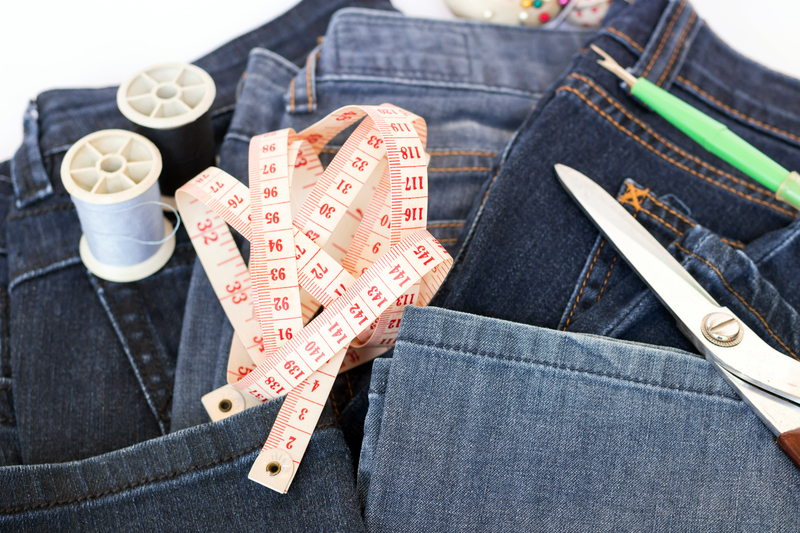Recycling Reinvented: Transform Worn-Out Objects Into Fashionable Finds
It's not just about saving the planet; it's about setting trends. Welcome to a new era of creativity, where recycling is reimagined and upcycling meets style. This comprehensive guide will explore how transforming worn-out objects into fashionable finds is revolutionizing the world of eco-friendly fashion.
Why Reinvent Recycling? The New Age of Upcycling Fashion
Years ago, recycling meant tossing paper, glass, or plastic into a bin. Today, environmental awareness has sparked an innovative movement--one where recycling is reinvented into something both stylish and sustainable. Instead of simply processing waste, enthusiastic creators are upcycling worn-out items, turning what was once considered junk into fashionable finds that stun on runways and in streetwear alike.
- Environmental Impact: Reduces landfill waste and conserves natural resources.
- Creative Expression: Encourages unique, one-of-a-kind designs.
- Economic Sense: Saves money and supports local artisans or DIY enthusiasts.

The Eco-Fashion Revolution: Sustainable Style for Everyone
Sustainable fashion goes beyond traditional methods. Designers, brands, and individuals are now transforming recycled materials into clothing, jewelry, handbags, and accessories. This form of innovative recycling caters to varied tastes, from boho chic to urban sophistication. Not only does it make a positive statement, it sets the stage for a trend that's here to stay.
From Trash to Trendsetting: Success Stories
- Old denim jeans converted into distressed jackets, skirts, or even totes.
- Disused vinyl records refashioned as statement earrings or bold bangles.
- Vintage buttons and broken necklaces reimagined into trendy brooches and hairpins.
These creative transformations prove that reinvented recycling isn't just eco-friendly; it's also the foundation of tomorrow's fashion.
How to Transform Worn-Out Objects Into Fashionable Finds
Ready to start your own upcycling adventure? Here's how you can give new life to discarded items and create fashion-forward masterpieces:
Step 1: Identify What Can Be Upcycled
Not everything in your donation pile is destined for the rubbish heap! Look for materials that have:
- Durability: Denim, canvas, leather, and cotton are all strong candidates.
- Unique Patterns: Retro prints or distressed looks can add character to your designs.
- Potential for Reinvention: Zippers, buttons, and hardware from worn-out clothing make excellent embellishments.
Step 2: Gather Your Tools
All you need is a bit of imagination and simple supplies:
- Sewing kit (needle, thread, scissors, pins)
- Glue gun or fabric glue for non-sewing projects
- Pliers and wire cutters for jewelry making
- Paints, dyes, and embellishments like beads or fabric markers
Step 3: Get Inspired!
Let your creativity run wild. Scour social media for #upcycledfashion or #reinventrecycling to see what makers around the globe are doing. You'll be surprised by the artistry and innovation.
Step 4: Design and Create
Map out your design. Sketching is useful, but some prefer to improvise as they work. Trust your instincts--you're the designer!
Step 5: Show Off Your Upcycled Fashion Finds
Once you've brought your vision to life, flaunt your new piece! Share your work online, wear it with pride, and maybe even inspire others to join the recycling reinvention movement.
Fashionable Finds: Inspirational Ideas for Reinvented Recycling
If you need inspiration, consider these imaginative ways to revamp worn-out objects into trendy accessories and wardrobe essentials:
1. Worn Jeans to Boho Bags
- Cut off the worn legs and use the intact denim for a rugged handbag.
- Add scarf fabric lining for a touch of color and personality.
- Use extra pockets and zippers from other jeans to increase functionality.
2. T-shirt Quilts and Patchwork Scarves
- Cut memorable tees into large squares for a unique quilt or throw blanket.
- Smaller strips and scraps can be sewn into patchwork scarves - a visual diary of past concerts or favorite brands.
3. Leather Belt Bracelets
- Repurpose cracked belts as vintage-inspired bracelets by trimming them to fit your wrist.
- Embellish with charms, studs, or leftover buttons for a custom look.
4. Button Statement Necklaces
- Sew or glue vintage and misfit buttons onto thick felt to create a bold, one-of-a-kind necklace.
- Mix in repurposed beads or old chain links for extra flair.
5. Sweater Mittens
- Old wool sweaters can be turned into cozy mittens--simply trace your hands, cut, and sew!
- Add decorative stitching or recycled ribbon for a whimsical twist.
The Environmental Benefits of Upcycling Fashion
Transforming discarded materials into usable goods is a crucial part of the sustainability puzzle. Here's what recycling reinvented accomplishes, beyond being stylish:
- Reduces textile waste by slowing down the consumption loop.
- Cuts emissions and resource use by giving existing products new life.
- Promotes conscious consumerism--encouraging people to value quality and innovation over disposability.
- Empowers communities by stimulating small businesses and local artisans.
Fast Fashion vs. Reinvented Recycling
Traditional fashion cycles have a high environmental toll: waste, pollution, and unethical labor. In contrast, reinvented recycling focuses on slow fashion, longevity, and minimal environmental impact. It offers a viable, attractive alternative for those seeking to merge style and stewardship.
Eco-Friendly Fashion Brands Leading the Way
Major brands and startups alike are championing the cause of recycling reinvented fashion:
- Patagonia: Famous for repairing and repurposing outdoor wear.
- Re/Done: Specializes in vintage denim revived into fresh styles.
- Rothy's: Creates stylish shoes and bags from recycled water bottles.
- Elvis & Kresse: Transforms decommissioned fire hoses and leather off-cuts into luxury accessories.
- Zero Waste Daniel: Designs high-fashion, zero-waste garments from studio scraps.
Shopping from these brands or supporting local creators means your wardrobe becomes a powerful tool in reducing your environmental footprint while showcasing your taste for originality.
Join the Movement: Getting Involved in Reinvented Recycling
If you're inspired to become part of the recycling reinvented movement, here's how you can take the next step:
- DIY Workshops: Attend community classes to learn practical upcycling techniques.
- Clothing Swaps: Swap instead of shop--refresh your wardrobe while reducing waste.
- Support Eco Brands: Choose products from companies that practice sustainable manufacturing and upcycling.
- Share Your Creations: Whether on social media or at local markets, inspire others to recycle reinventively.

Tips for a Successful Upcycling Project
- Start simple: Begin with a small project, like a t-shirt tote or a jewelry piece, to build confidence.
- Mix materials: Combine unexpected elements (leather, fabric, metals) for unique effects.
- Focus on function and form: Stylish is great, but make sure your item is still wearable or useful.
- Tell your story: Every upcycled creation has a history. Celebrate that narrative in your final design.
The Future of Fashion: A Sustainable, Stylish Tomorrow
As awareness of our environmental impact grows, so does the appeal of transforming worn-out objects into fashionable finds. Whether you're a designer, a DIY enthusiast, or a mindful shopper, your actions can spark change. With every creative reinvention, the fashion industry takes one step closer to lasting, meaningful sustainability.
Recycling reinvented is more than a trend--it's a powerful lifestyle choice. By upcycling old objects into something chic and desirable, we reduce waste, promote mindful purchasing, and create a cycle where style and sustainability walk hand in hand.
Ready to Reinvent Recycling?
So dig out your box of "junk," fire up those creative engines, and join the sustainable fashion movement. You'll not only look great--you'll do great things for the planet too.
The age of reinvention is here. What will you create next?